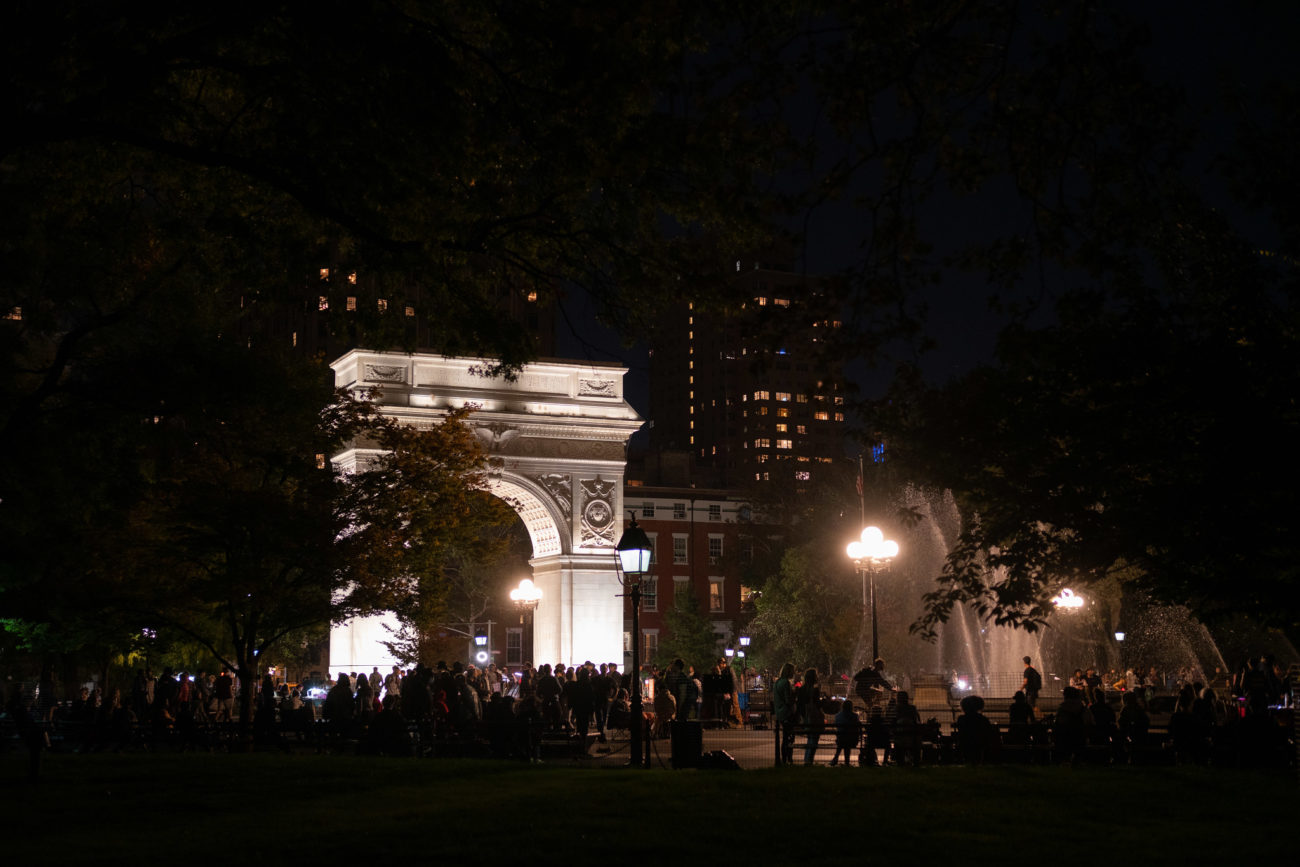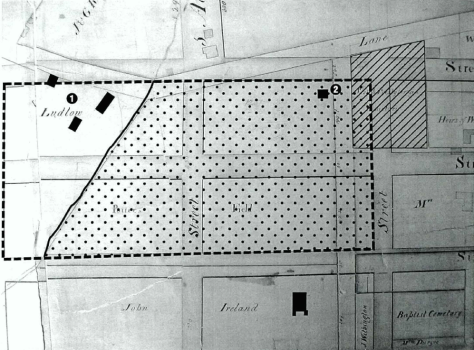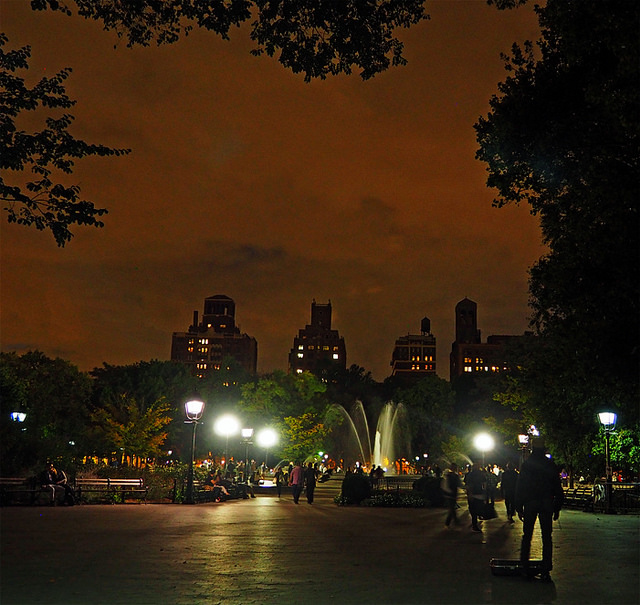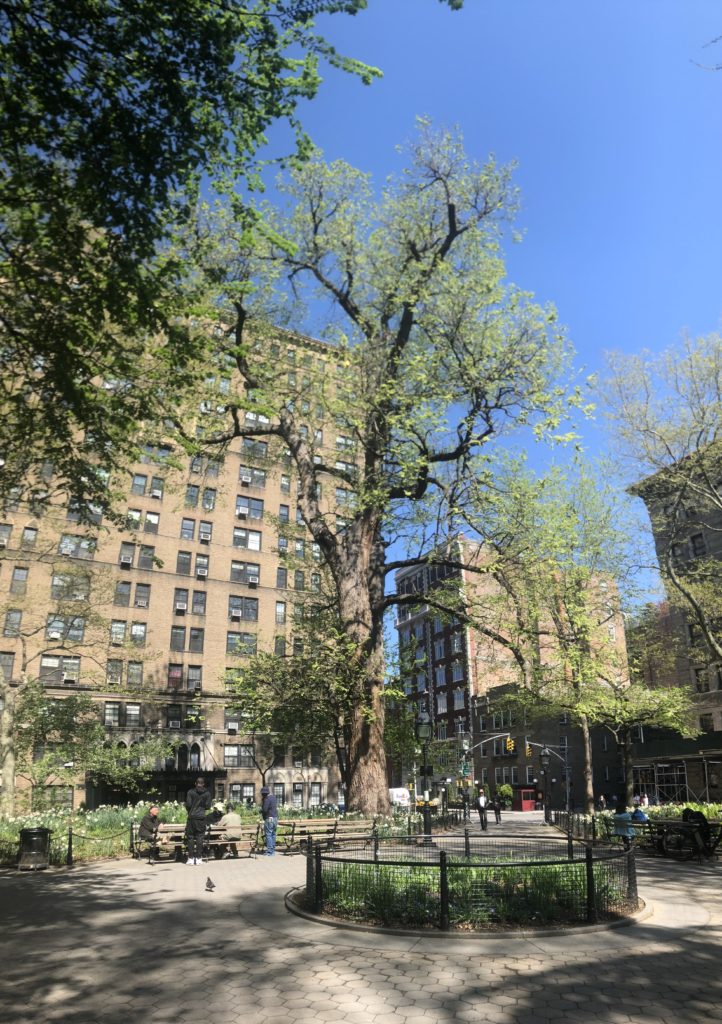Washington SCARE Park

Happy Halloween! The Halloween season is upon us; a time to give ourselves the chills by telling spooky stories in the dark. In the spirit of the season, we’re sharing (and debunking) some Washington Scare Park stories that may be more myth than history.
A PUBLIC BURIAL GROUND

Do you ever think about what’s beneath your feet as you stroll around Washington Square Park? Of all the chilling tales about this place, one of the most unnerving is also the only one that’s true; and it’s likely the foundation of many of the ghoulish myths. Before the land of Washington Square was a public park, it was a potter’s field: a public burial ground where poor and indigent people were interned. It has been estimated that there are 20,000 bodies buried under the ground, many of them victims of yellow fever. There were multiple epidemics of the terrible disease: 1797, 1798, 1801, and 1803. In fact, in March 2021 NYC Parks reinterred the fragmentary remains of some early New Yorkers that were discovered during construction in and around WSP. And this September 2023, a headstone that was found at the same time as the remains was permanently displayed in the Park House window.
When it served as a public burial ground, the land that is now Washington Square Park was considered to be on the outskirts of the city, whose center stood further south. Since burial grounds are a grim necessity for urban living, the remote location and the proximity of numerous churches with their own cemeteries made it the ideal spot. Little did city planners know how quickly the City would expand north.
AN EXECUTION GROUND

While it is true that Washington Square Park was once a potter’s field, that fact has given rise to many macabre and untrue rumors. One of them is that the potter’s field served double duty as a regular execution ground. The myth says that soon after the burials started, the city sheriff erected a public gallows near where the fountain currently sits. He began performing executions and burying the bodies in the field. With the potter’s field solidly established, and prison on the Hudson River less than a mile away to theoretically supply necks for the gallows, it’s easy to understand why this story may have started and stuck around. However, according to meticulous City records and newspapers of the day there is only one documented hanging that took place in the Potter’s Field: that of Rose Butler.
Rose was a 19 year old enslaved woman when she was convicted of arson in 1819. She was accused of attempting to burn down her master’s home while the family slept inside. Although there was minimal damage and no one was harmed, fire was a significant danger in a city built mostly of wood and arson was a capital crime. This terrible incident took place during New York’s complex period of gradual emancipation, when blacks might be free, indentured, or remain in slavery based on their age. The motivation to deal with arson harshly combined with the cultural tensions of the time led to devastating results for Rose. She was made an example of, and was sentenced to a public hanging in the potter’s field.
Her execution was attended by thousands of New Yorkers. A gallows was erected specifically for the execution, which would have been unnecessary had one already been in use at the potter’s field.
Slavery in New York did not come to a definitive end until 1827, the year Washington Square opened as a Park.
THE “HANGMAN’S” ELM

Another story likely born from the Park’s history as a potter’s field is the myth of the Hangman’s Elm. By the northwest entrance of Washington Square Park stands one of the oldest trees in Manhattan. This beautiful English Elm has a dark–and unearned history ascribed to it.
The legends vary slightly, but the stories all make the same general claim: that the tree was used for executions by hanging. In one variation, the story goes that traitors were hung from it during the Revolutionary War. Another version says Marquis de Lafayette himself watched 20 highwaymen swing from its branches. However, there is no hard evidence to back up any of these tales. In fact, one piece of historical evidence actually helps to disprove the narrative. For most of its existence the English Elm stood on private land and not in the potter’s field. One thing that can’t be denied, this tree has witnessed much in its 300+ years.
ROOSEVELT’S DOG

Unlike our other spooky stories that seem to have been inspired by a small kernel of truth, this one is pure wild imagination. Washington Square Park is haunted. Not by the 20,000 souls buried beneath our feet. Not by Rose Butler, the slave girl wrongly put to death. But by a little black dog named Fala.
From 1942 to 1949, Eleanor Roosevelt lived at 29 Washington Square right on the corner of the Park. And Fala was her dog, well, her husband’s to be precise. Up until his death in 1945, President Roosevelt was a doting owner to the little Scottish terrier. The dog would have gone on walks in the Park while visiting Eleanor before 1945, and in the years he lived with her after his master’s passing. It is said that on a quiet night you can still see the little dog wandering through the Park, sad and lonely, looking for his beloved President.
